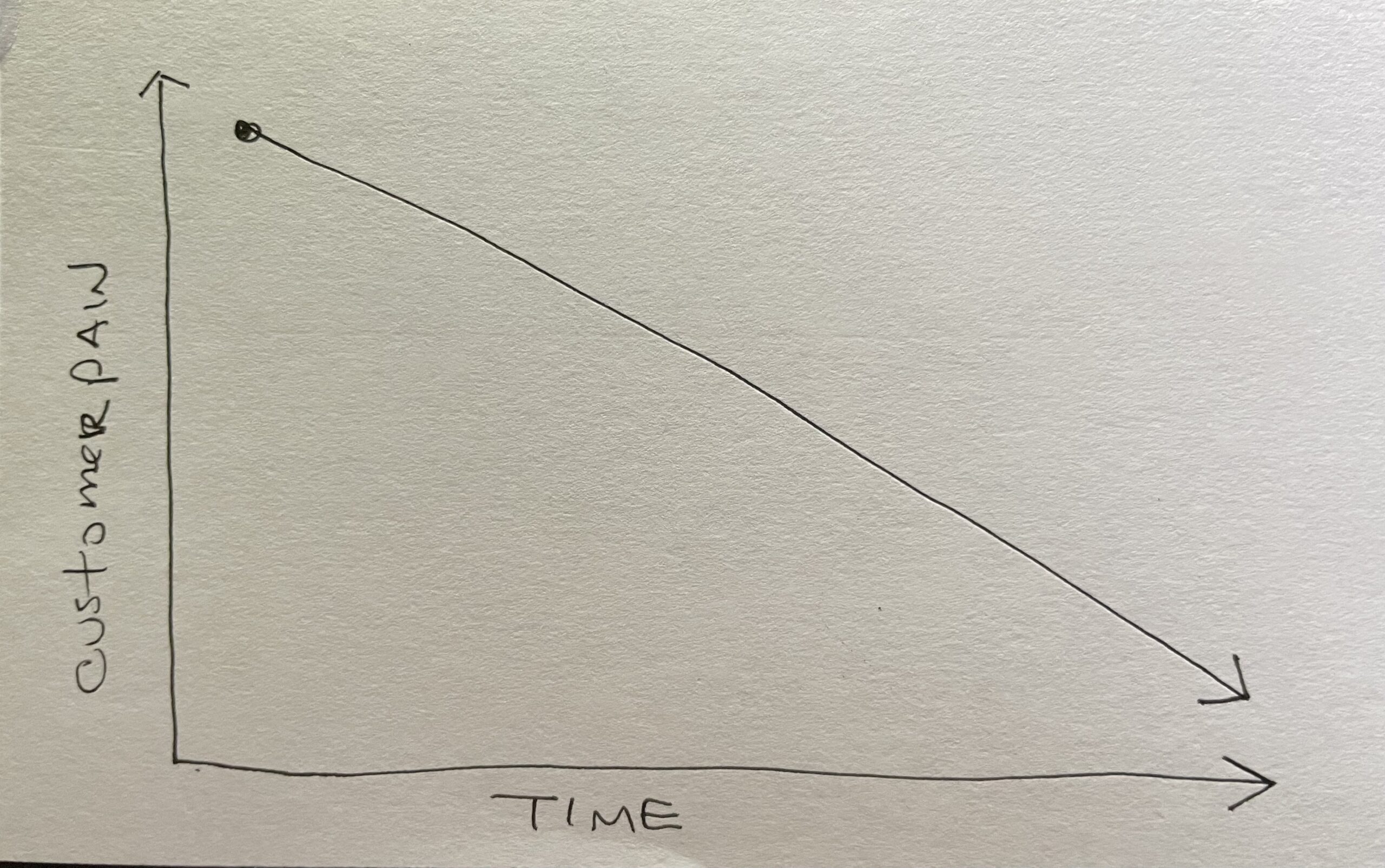Everyone has a rich and busy life, and each day we all have a lot on our minds, including persistent frustrations. Over time, we either resolve the frustration through some sufficiently satisfactory solutions or we simply accept it as a “that’s just how it is.” Suddenly, a solution is no longer required. Entrepreneurs are racing …
Category Archives: Business
Making Time
(or On the Founder-Idea Obsession) There have been a handful of times, less than 20 across my entire life, where I’ve been obsessed with an idea. Yes, unhealthily obsessed. So obsessed I have temporarily neglected other obligations including my own health. Obsessed where I steal every possible moment to slip into the obsession. I’ve regularly …
Correction Canary
About fifteen years ago now, I was reorganizing how search results are displayed in a popular travel site (one you’ve probably used). The goal of the project was to to increase readability and scannability. To do this, I needed to move a few bits of information around. In my rush to prepare the prototype for …
Measuring Growth in Your ‘Return on Lifestyle’ Business
In almost all cases, growing a business means one of the following: – ever-increasing revenues – ever-increasing share price – ever-increasing customer count – ever-increasing headcount These are the metrics reported in the business section. These are the numbers that get everyone – the leadership team, the shareholders, early investors, the office space owners, the …
Continue reading “Measuring Growth in Your ‘Return on Lifestyle’ Business”
Make Mountains into Milestones
I recently returned from four refreshingly long days in Lutsen along the beaches of Lake Superior’s north shore. The weather was warm and calm enough to spend one of the mornings in a kayak. After scooting along the shoreline, our tour guide led us out in to the lake, far enough out that the shore …
Twin Cities Co-Working Overview 2010
Dan Haugen wrote up a very nice overview of Twin Cities’ nascent co-working options. He got some great quotes from Zack Steven, Don Ball, Stephen Filing, and myself. Nice work Dan.
The ‘With’ Exception that Proves the ‘Because Of’ Rule
“Ahem, because you’re not [making money in podcasting] doesn’t mean that others aren’t.” – Kris Smith, Pale Groove Studios
Is Competition Simply Lack of Articulation?
“The main idea is that whatever market you are in, whether it’s big or not you should be number one and should do whatever it takes to get there.” – Aneil Weber I’ll extend this and say, the only way to guarantee success is to pursue an a single niche to its extreme – be …
Continue reading “Is Competition Simply Lack of Articulation?”
Where to Draw the Line on the Freemium Business Model
I’ve been thinking about “freemium” – Fred Wilson’s Favorite Business Model the last couple days, and sketched up where the boundaries feel right for me. How do these feel to you? Jason Fried on freemium-ish.
Growing a Business – Today, 20 Years Later
I completely disconnected from phone, computer, internet, for a day and a half this weekend. Much of that time was spent reading Paul Hawken’s ‘Growing a Business’. On my way through the book, I had to keep checking and double checking the publication date (1987). Growing a Business reads like Cluetrain Manifesto (2001) – commerce …
Continue reading “Growing a Business – Today, 20 Years Later”

